Baseball History Comes Alive Now Ranked #2 by Feedspot Among All Internet Baseball History Websites and Blogs!
Guest Submissions from Our Readers Always Welcome!
Scroll Down to Read Today’s Essay
Subscribe to Baseball History Comes Alive for automatic updates (sign-up block found in right side-bar)
As a Free Bonus for subscribing, you’ll get instant access to my two Special Reports: Memorable World Series Moments and Gary’s Handy Dandy World Series Reference Guide!
1910-1913 New York Giants Photo Gallery
Click on any image below to see photos in full size and to start Photo Gallery:
Back Into The Dead Ball Era:
The Great 1912 New York Giants
“In playing or managing, the game of ball is only fun for me when I’m out in front and winning. I don’t give a [hill of beans] for the rest of the game.” -John McGraw
As some of you may be aware, I’m a big fan of the Dead Ball Era, my favorite period in baseball. Recently I was reading some articles on the Giants’ legendary manager, John McGraw, and they got me thinking about the great Giant teams of
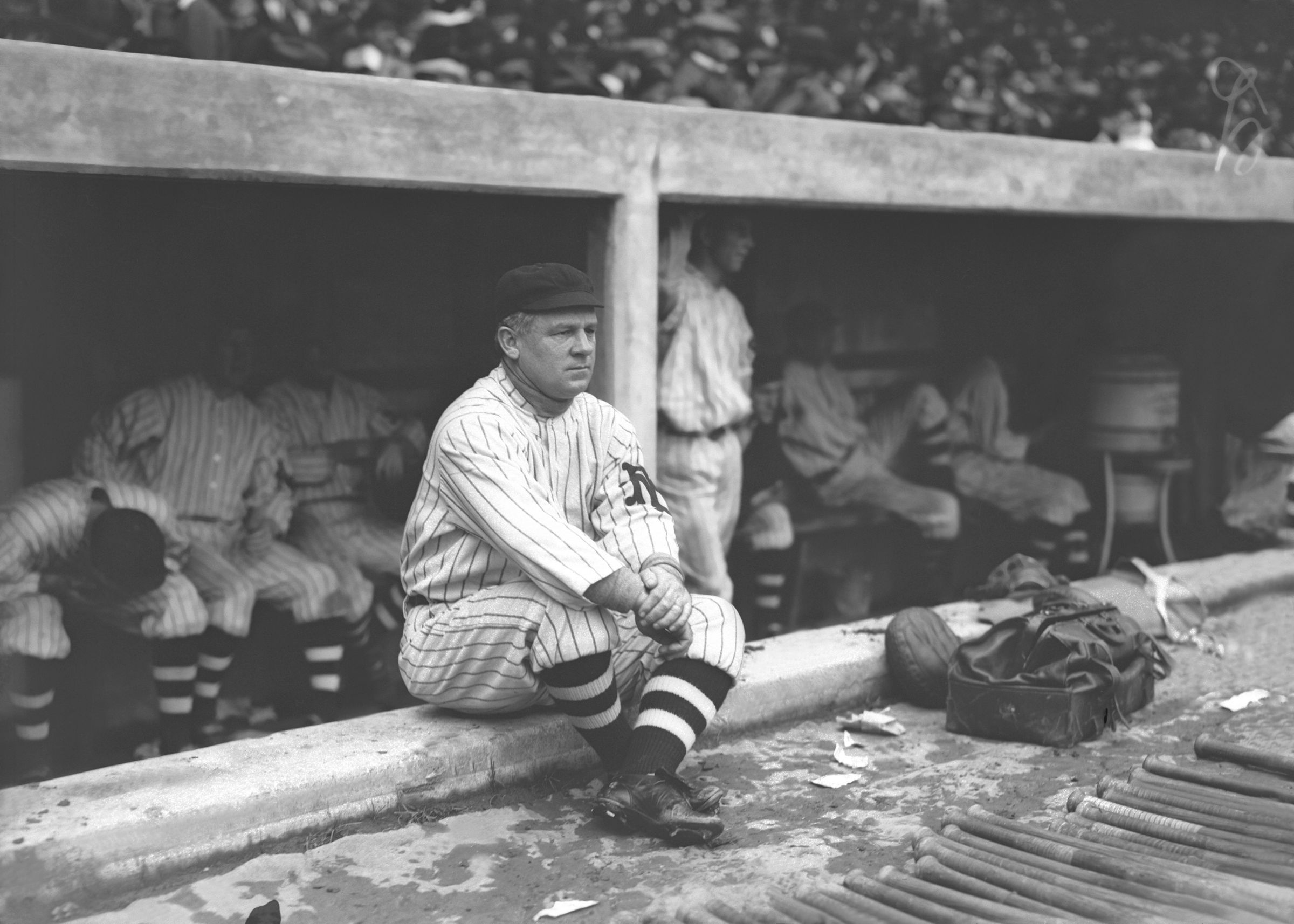
the early 1910s. These powerful teams won consecutive National League pennants in 1911, ‘12, and ‘13. A few years later, they won another in 1917. McGraw might have had these three pennants in mind when he made this comment:
“No club that wins a pennant once is an outstanding club. One which bunches two pennants is a good club. But a team which can win three in a row really achieves greatness.”
Unfortunately for the Giants, all four of these teams lost in the subsequent World Series. The 1911 and ‘13 teams lost to Connie Mack’s Athletics, the 1912 team lost to the Red Sox, and the 1917 team lost to the White Sox. McGraw’s fortunes soon turned around, though, as his Giants later won four consecutive pennants (1921, 1922, 1923, and 1924), with World Series victories in ’21 and ’22 against their crosstown rivals, the Yankees.
1912: The Best of the Three
The 1912 team might be the best Giant team of the era. In the beautiful featured photo above, we see the 1912 National League pennant winners. (I did the player identifications for this one. See how many names you can pick out before looking at the complete identifications below). Together with the 1911 and 1913 teams, the Giants of this era made up one of the game’s earliest dynasties, going 303-153 (.664) from 1911-’13.
The Giants dominated the National League in 1912, the franchise’s thirtieth season. They opened the season at 54-11 and built a 16 1/2 game lead by July 3. They finished 103-48 (.682), 10 games ahead of the Pirates. Offensively, they were a powerhouse. Although their team .286 batting average was only fourth best, they lead the league in runs, home runs, RBIs, stolen bases, OBP and OPS.
“Laughing Larry” Doyle was the National League MVP, and Chief Meyers had one of the
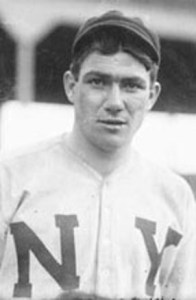
greatest offensive seasons ever for a catcher, finishing second in batting average (.358), first in on-base percentage (.441), and fourth in slugging (.477).
The Giants’ Great Pitching Staff
And what a pitching staff, easily the best in the league, with four great starters: Jeff Tesreau (17-7, 1.96), Christy Mathewson (23-12, 2.12) Rube Marquard (26-11, 2.57), and Red Ames (11-5, 2.46). Tesreau’s 1.96 ERA led the league, while Mathewson’s 2.12 was second. Mathewson was also second in complete games (27), and fourth in wins (23).
Rube Marquard‘s 18-game winning streak was the top story in baseball that year. His 26 wins led the league, and he finished third in strikeouts (175). Red Ames’ 2.46 ERA was fifth in the league. Reliever Doc Crandall also had a fine season, going 13-7 with a 3.61 ERA.
The Giants lost the 1912 World Series in heartbreaking fashion, with Fred
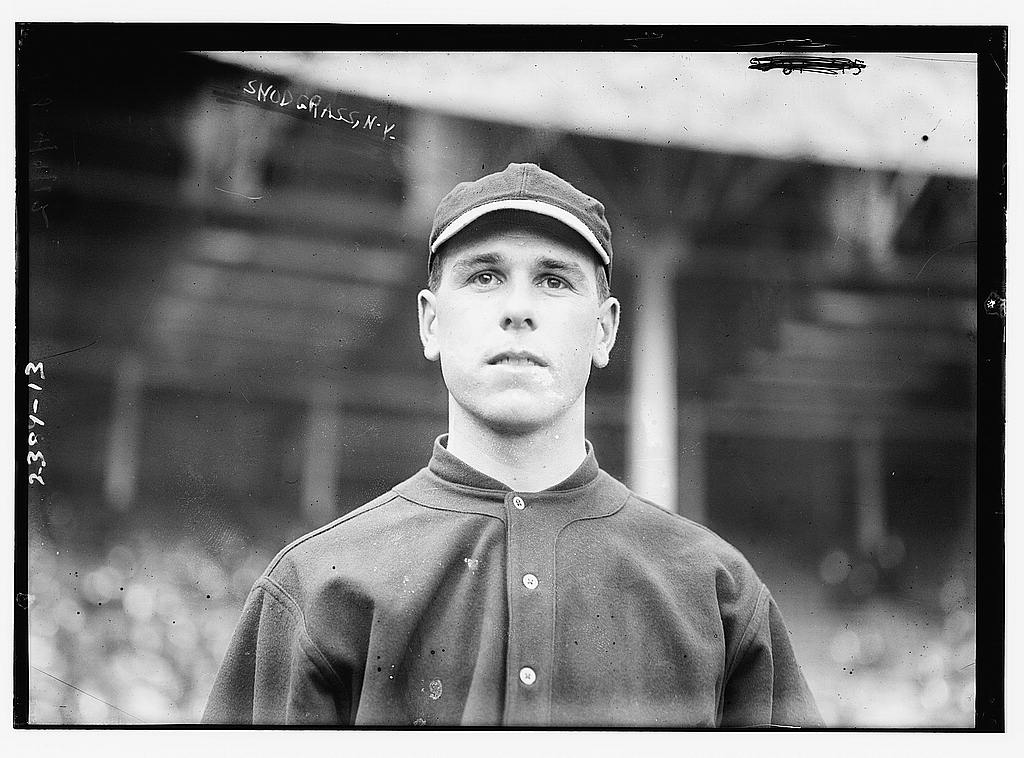
Snodgrass taking most of the blame with his infamous “$30,000 Muff,” although there was plenty of blame to go around. The series featured classic pitching matchups between Mathewson and the Red Sox’ Smoky Joe Wood. Interviews with Marquard, Meyers, and Snodgrass made up a good portion of the classic baseball book by Lawrence Ritter, “The Glory of Their Times.”
1912 New York Giants Player Identifications
Top Row, L-R: Lore Bader, Heine Groh, Dave Robertson, Ted Goulait, George Burns, Fred Merkle, Grover Hartley, Doc Crandall, Hooks Wiltse, Al Demaree, Wilbert Robinson, Art Wilson, Red Ames, Moose McCormack, Larue Kirby, Tillie Shafer. Front Row, L-R: Art Fletcher, “Laughing Larry” Doyle, Chief Meyers, Fred Snodgrass, Buck Herzog, Red Murray, Mascot Hennessey, John McGraw, Christy Mathewson, Rube Marquard, Jeff Tesreau, Josh Devore, Beals Becker.
So let’s take a moment to remember one of the great items from the Dead Ball Era, the 1912 New York Giants.
Gary Livacari
Information: Stats from Baseball Reference. com
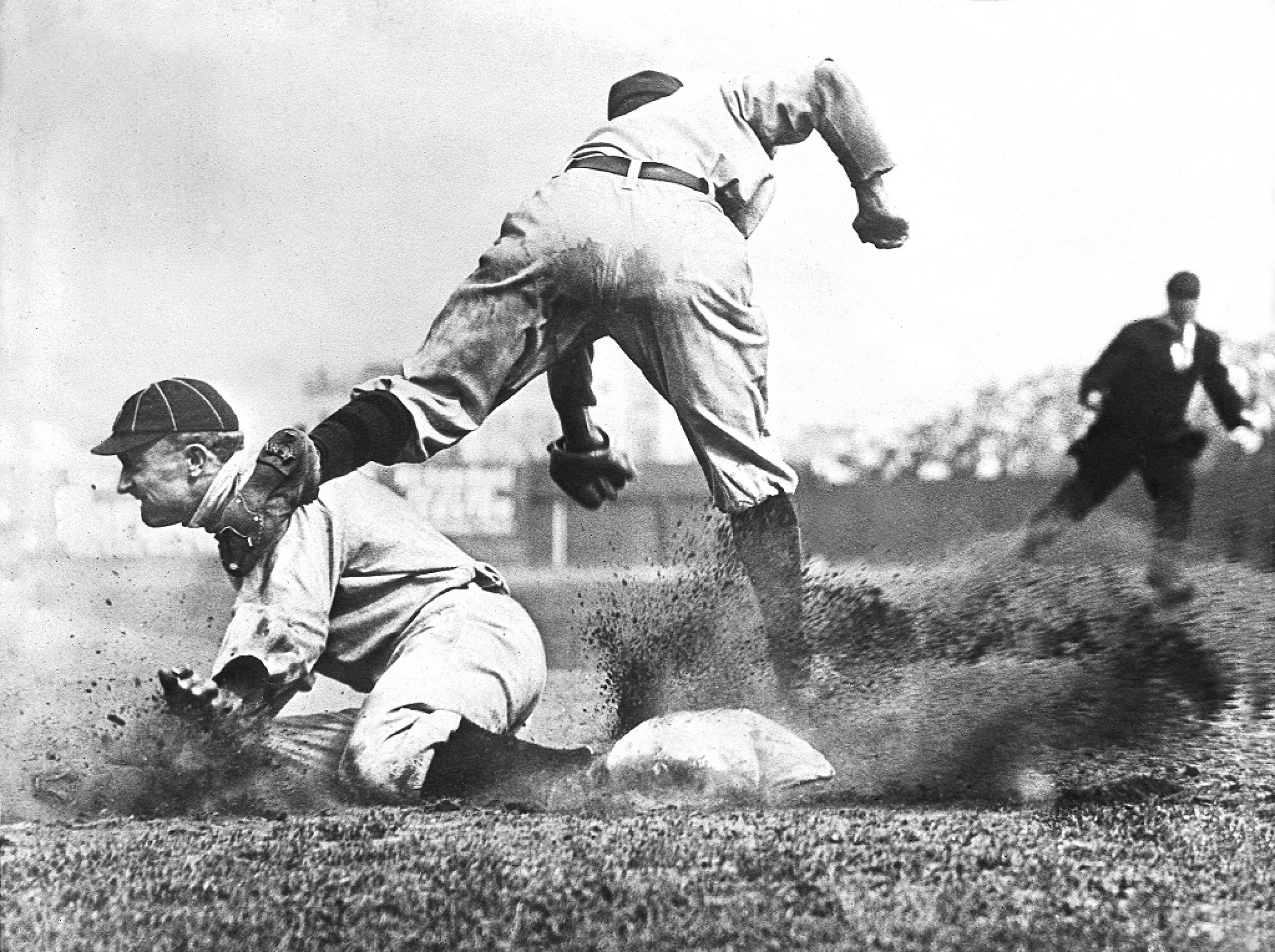
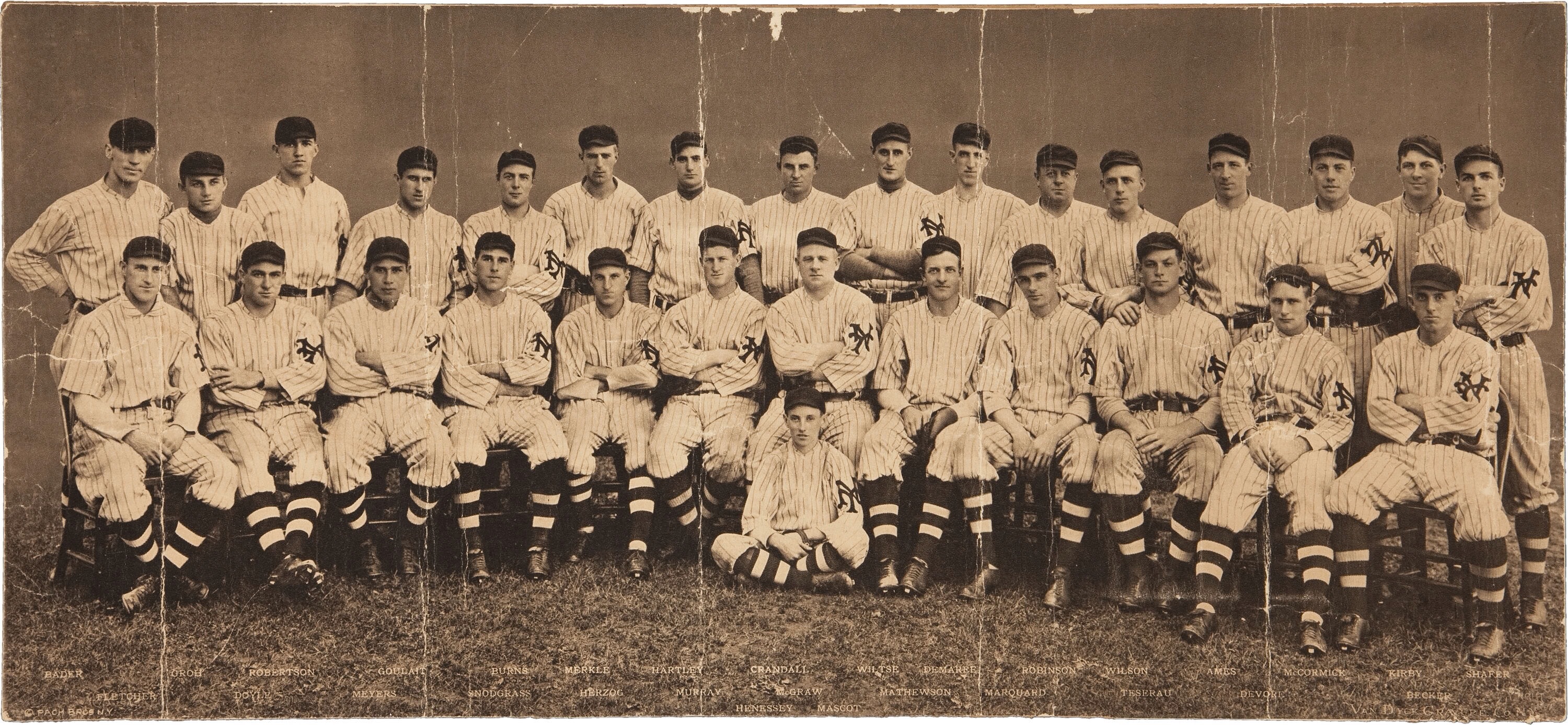
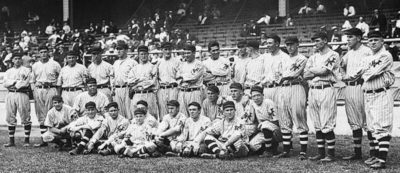
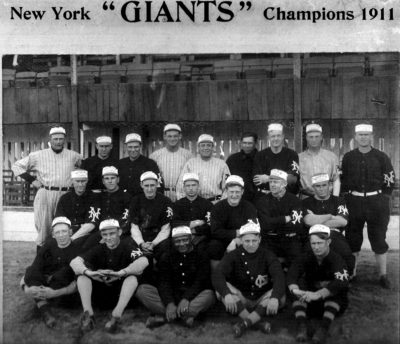
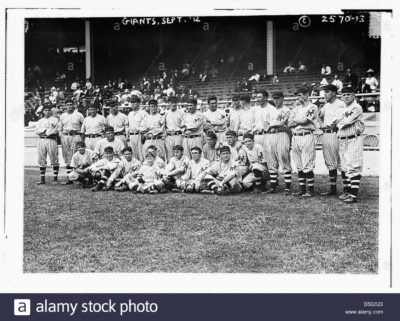
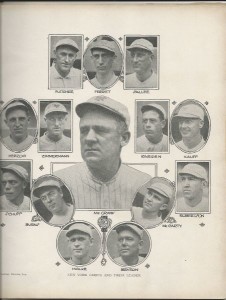
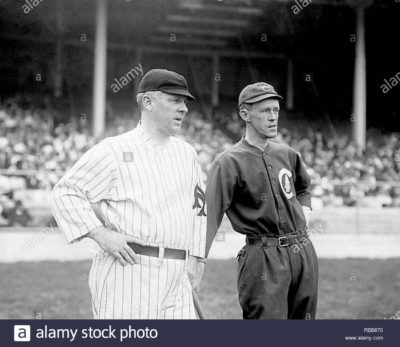
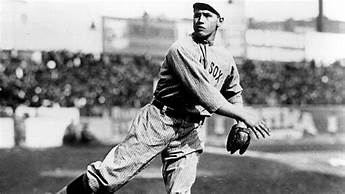
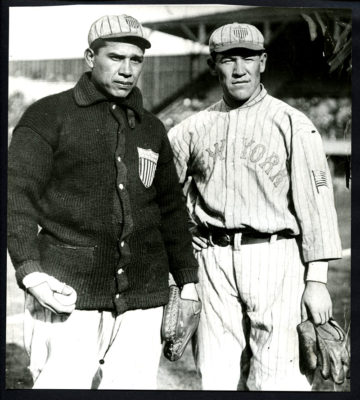
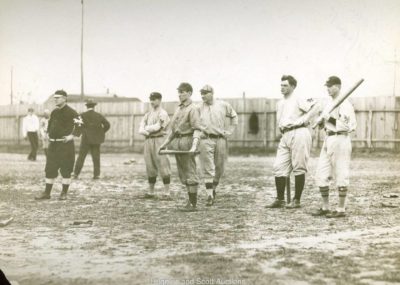
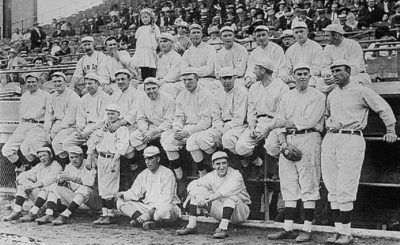
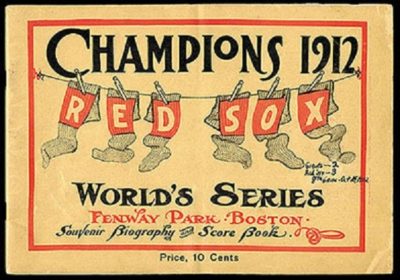
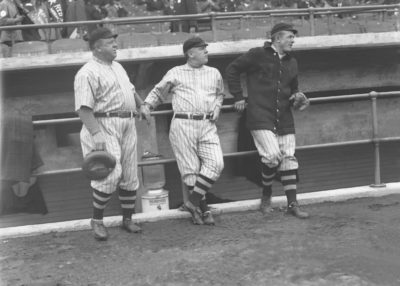
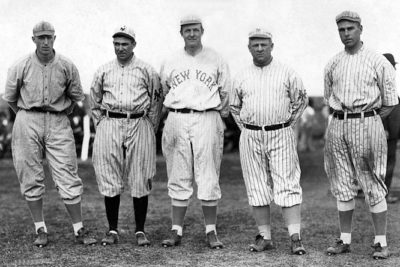
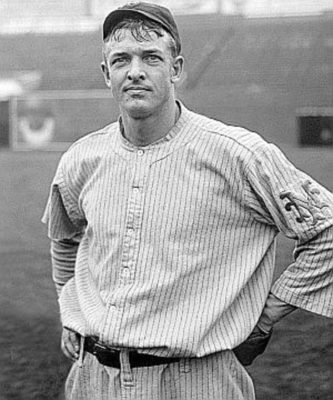
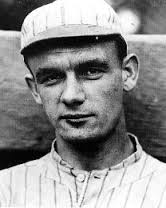
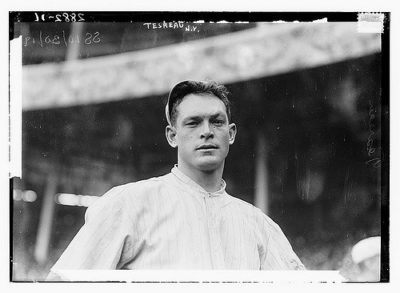
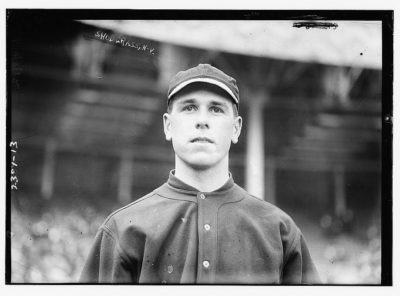
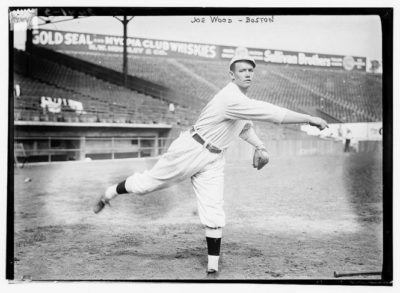
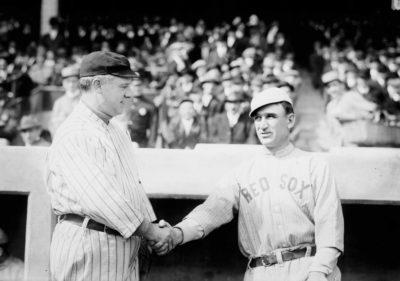
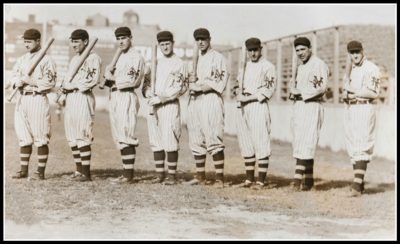
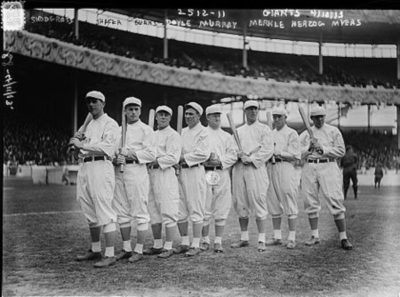
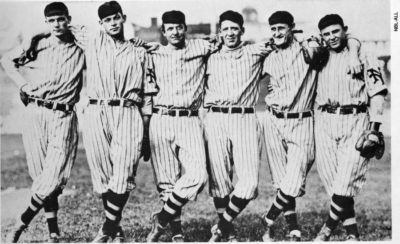
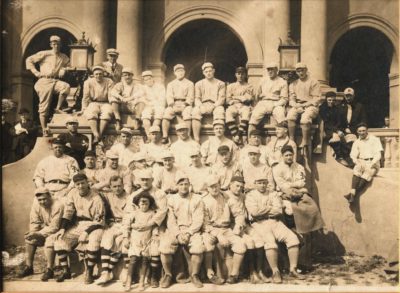
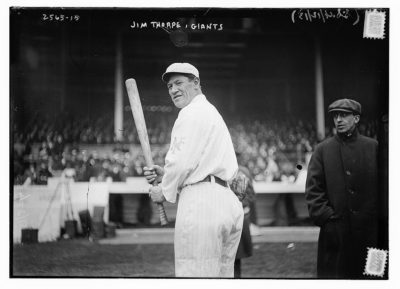
Great team, Gary, but Red Sox that year moved into their new ballpark that boosted them to four World Series championships in six years. Add in the “Miracle Braves” of 1914 and Boston almost had a monopoly on the World Series.
Mike Vaccaro wrote an interesting book on the 1912 World Series entitled, “The First Fall Classic” that I highly recommend.
Yeah Paul, I’m well aware of the Red Sox of that era. A feature on them might make for a nice followup piece. In addition to the Giants and Red Sox, the other great team of the 1910s was the A’s with pennants in 1910, 1911, 1913, and 1914. WS wins in ’10, 11, and ’13.
The 1916 Giants team, which finished fourth, set a record with 26 consecutive wins and a road record of 16 straight. An example of how streaks aren’t that important.
Good point! I had forgotten about those streaks…thanks!
Gary,
I wasn’t trying to question your expertise about the dead ball teams.
I always somewhat held it against McGraw that he refused to play the Sox in 1904 and basically said it was beneath him and team to play an inferior league.
McGraw’s record in the World Series was 3-6, losing four in a row from 1912-1917 takes a little bit of the shine off the greatness tag, albeit still one of the best for sure.
Haha! I wish I was an expert! Points well taken about McGraw, but I still always enjoy reading and writing about the guy. By the way, I am thinking of making this a three-part series featuring the dominant teams from the 1910s. This is Part One, Part Two would be Red Sox, Part Three would be A’s. You’re welcome to do a little write-up on the RS if you so desire!
Very informative and interesting article. Thanks very much for all your work on it.
Thanks Kerry!